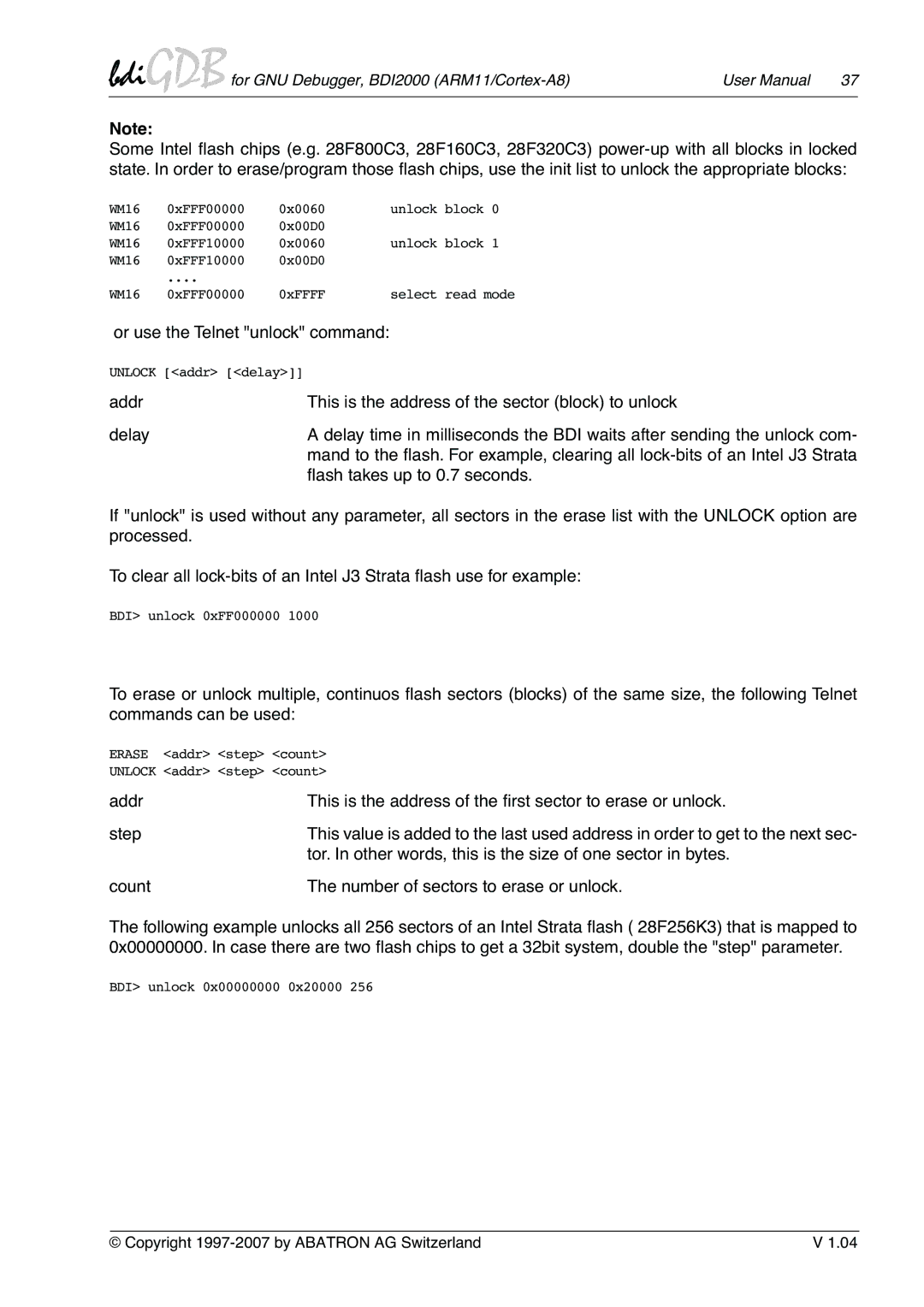
bdiGDB for GNU Debugger, BDI2000 | User Manual 37 |
Note:
Some Intel flash chips (e.g. 28F800C3, 28F160C3, 28F320C3)
WM16 | 0xFFF00000 | 0x0060 | unlock block 0 |
WM16 | 0xFFF00000 | 0x00D0 |
|
WM16 | 0xFFF10000 | 0x0060 | unlock block 1 |
WM16 | 0xFFF10000 | 0x00D0 |
|
| .... |
|
|
WM16 | 0xFFF00000 | 0xFFFF | select read mode |
or use the Telnet "unlock" command:
UNLOCK [<addr> [<delay>]] |
|
addr | This is the address of the sector (block) to unlock |
delay | A delay time in milliseconds the BDI waits after sending the unlock com- |
| mand to the flash. For example, clearing all |
| flash takes up to 0.7 seconds. |
If "unlock" is used without any parameter, all sectors in the erase list with the UNLOCK option are processed.
To clear all
BDI> unlock 0xFF000000 1000
To erase or unlock multiple, continuos flash sectors (blocks) of the same size, the following Telnet commands can be used:
ERASE <addr> <step> <count>
UNLOCK <addr> <step> <count>
addr | This is the address of the first sector to erase or unlock. |
step | This value is added to the last used address in order to get to the next sec- |
| tor. In other words, this is the size of one sector in bytes. |
count | The number of sectors to erase or unlock. |
The following example unlocks all 256 sectors of an Intel Strata flash ( 28F256K3) that is mapped to 0x00000000. In case there are two flash chips to get a 32bit system, double the "step" parameter.
BDI> unlock 0x00000000 0x20000 256
© Copyright | V 1.04 |
